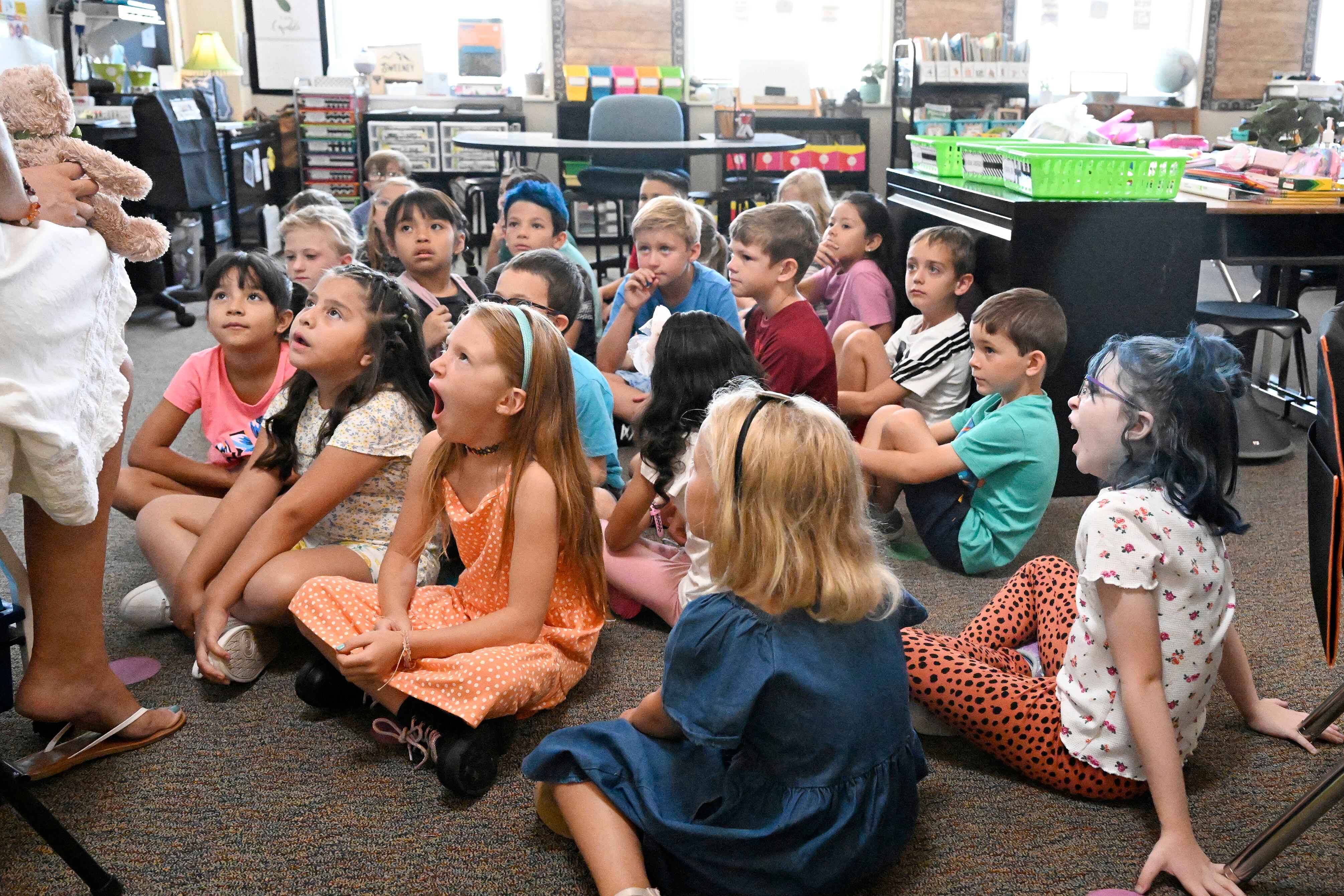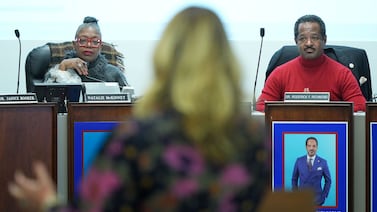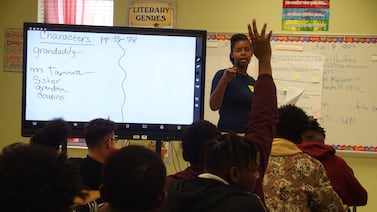Sign up for our free monthly newsletter Beyond High School to get the latest news about college and career paths for Colorado’s high school grads.
A proposed overhaul of Colorado’s school funding formula is being hailed as long overdue, though lawmakers are wondering how they’ll pay for it and some education advocates say it’s only a partial answer to decades of underfunding.
Under the proposal, Colorado schools would get more money to meet the needs of English learners and students with disabilities, and rural districts would get more funding to address their challenges.
If adopted, it would be the first major change in 30 years to how Colorado divvies up funding to schools. The proposal, released this week, is the work of a 17-member task force that managed to reach agreement on thorny issues that have tanked previous efforts to reform the current formula, which is widely viewed as out-of-date and unfair.
“With the formula change, the state can really target those resources to the kids who need the most,” said task force member Brenda Dickhoner, CEO of the conservative education advocacy group Ready Colorado. “We are really moving away from a one-size-fits-all educational model to a really individualized model that takes place in a variety of different types of educational settings. And I think that is what’s going to close our achievement gaps.”
But the new formula would require about $474 million to implement — a roughly 8.9% increase in state education funding — when lawmakers already expect a tight budget year and want to spend money on other priorities, including higher education.
And some proposed changes could get pushback. Even task force members disagreed on some details, such as how to fairly account for higher costs in different parts of the state. State Sen. Rachel Zenzinger, an Arvada Democrat who will co-sponsor the school finance act, said she’s open to the recommendations. But she also wants to better understand how the new formula — which would permanently increase education funding — would affect spending in future years, especially because the state would need to use its savings to pay for the changes.
“I originally thought that we should definitely not do anything this year,” said Zenzinger, vice chair of the legislature’s Joint Budget Committee. “Now having read the report, I’m more open to contemplating changes that we can make this year.”
What does the formula do?
In a letter from the task force, Chair Chuck Carpenter, who also serves as Denver Public Schools chief financial officer, said the legislature charged the group with creating a “simpler, less regressive, more adequate, understandable, transparent, equitable, and student-centered” school finance formula. The task force brought together a bipartisan collective of advocacy groups and educators from across the state.
Carpenter said the state’s formula was created before the current understanding of what public schools should be, including greater expectations involving standards, testing, and curriculum.
The task force report said it expects the legislature to consider the recommendations as a whole.
“Hopefully the work of this task force will lead to substantive changes or at least incremental improvement,” he said in the letter. “Our work need not and will not be the final word.”
This is the latest of many efforts to rewrite the school finance formula over the last decade. The current formula gives far more weight to district characteristics, such as district size and whether the cost of living is high, than it does to factors like how many students live in poverty. The result is that some wealthy districts end up with more state funding than poor ones.
But efforts to change the formula have faced stiff political headwinds because no district wants to get less money. Lawmakers created the task force after a previous school finance committee disbanded without recommending a formula rewrite.
The new formula would increase base student funding, so nearly every district would get more money. It also would dramatically increase how much more districts get for each student from a low-income household, each English learner, each student with a disability, and each gifted student.
Overall, districts serving students with higher needs, districts with low property wealth, and small, rural districts would come out ahead.
Districts with a higher cost of living still would get more money, but not as much as in the current formula. How to account for those differences could see more debate. Thirteen of the state’s 178 districts are projected to lose money under the recommended formula, including Douglas County, Boulder Valley, Littleton, Cheyenne Mountain, Academy 20, Poudre, and Aspen. These districts all serve more affluent communities, though for years they have pointed out they have to pay teachers more to live there and spend more on basic services.
Task force member Riley Kitts, Democrats for Education Reform’s senior director of policy and government affairs, said the group reached a strong consensus on most of the changes, which he called long overdue.
The task force is also working on studies to determine how much Colorado should spend on K-12 schools if it wants to see better outcomes. Those studies are due by January 2025.
Kitts said he believes the studies shouldn’t hold up a formula change this year.
Lawmakers and education leaders are reviewing the report
The recommendations come as lawmakers have committed to “fully fund” K-12 education for the first time since the Great Recession. That means ending the practice of holding back money — more than $10 billion in the last decade — to pay for other budget priorities.
Even doing that requires dipping into education reserves. At the same time, federal pandemic aid is expiring, revenue is down slightly, and lawmakers are struggling to pay for behavioral health, affordable housing, and a slew of other priorities.
Ultimately, lawmakers, especially the powerful six-member Joint Budget Committee, will decide whether they can afford to start the phase-in this year.
In a statement, a spokesperson for Gov. Jared Polis said districts serving students with higher needs have been short changed for years, and the governor looks forward to conversations with legislators, school districts, and others about the best way to make a difference for students through the formula this year.
Senate President Stephen Fenberg, a Boulder Democrat, said in a statement he is grateful for the recommendations and members will dig in to see what’s feasible for implementation this year.
House Education Chair state Rep. Barbara McLachlan, a Durango Democrat, said her initial read left her pleased because it tries to address funding issues for rural schools. If it can’t be adopted this year, she hopes to at least see a plan for when it would be.
“Let’s use the work and not ignore it,” she said.
Senate Minority Leader Paul Lundeen, a Monument Republican, called the work an “incremental — miniscule — step in the right direction.”
Lundeen said he’d prefer to see money fund students at the school level, instead of left to districts to distribute. And he would have liked to see money for schools that are getting strong results educating students.
Lundeen wouldn’t commit to supporting the formula changes.
“I’m working diligently to make it better,” he said. “I’m not going to say yes to something that is subpar to where I think it can get.”
Some education advocates have reservations. Tracie Rainey, Colorado School Finance Project executive director, said she wants to see the results of the adequacy studies first. Those might suggest different funding levels than those in the current recommendations.
Analyses that account for regional cost differences put Colorado about $2,000 below the national average in per-student spending. Rainey said half a billion dollars more won’t get Colorado to the national benchmark.
“If they can wait to do things until they get the adequacy study, then the state can really build out a roadmap and a plan because you have all the information,” Rainey said. “You still don’t have a lot of information.”
And Amie Baca-Oehlert, Colorado Education Association president, said that the formula illustrates statewide underfunding of K-12 schools. She wants Colorado lawmakers to talk about how to increase revenue for schools, “because the state needs the right revenue to do this.”
“Our hope is that this just continues to build the momentum to help voters understand and stand with us when we go to the ballot for a revenue fix for education,” she said.
Jason Gonzales is a reporter covering higher education and the Colorado legislature. Chalkbeat Colorado partners with Open Campus on higher education coverage. Contact Jason at jgonzales@chalkbeat.org.





